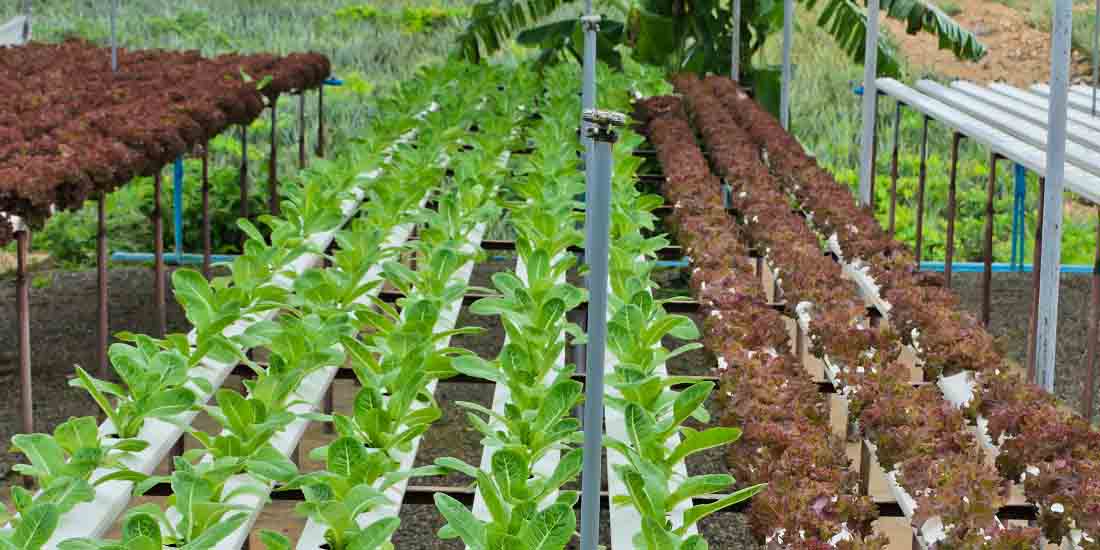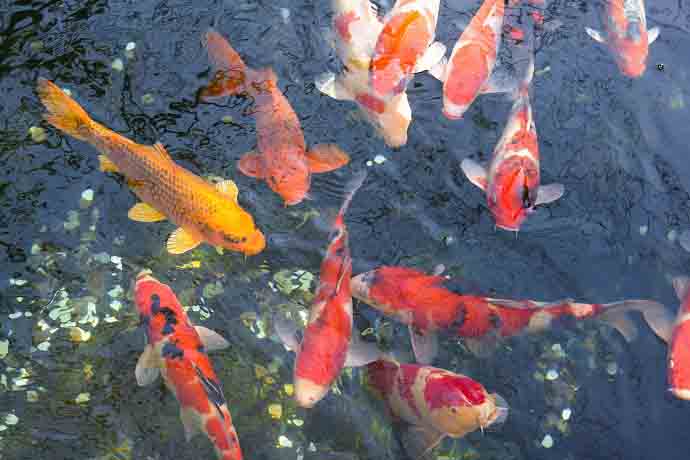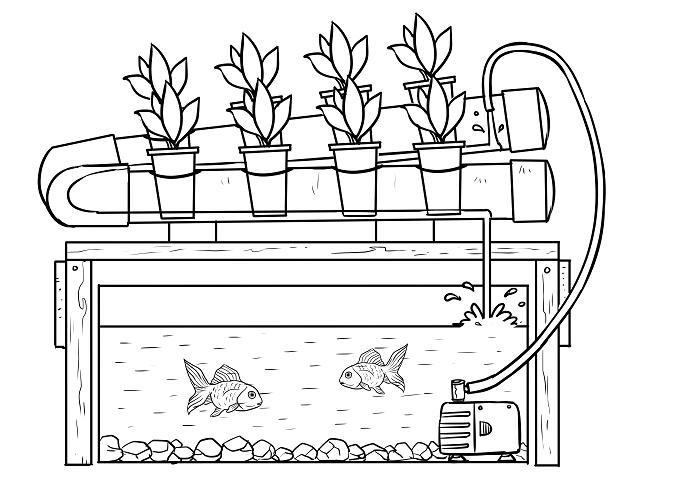
Aquaponics is a combination of aquaculture, which is growing fish and other aquatic animals, and hydroponics which is growing plants without soil. Aquaponics uses these two in a symbiotic combination in which plants are fed the aquatic animals’ discharge or waste. In return, the vegetables clean the water that goes back to the fish. Along with the fish and their waste, microbes play an important role to the nutrition of the plants. These beneficial bacteria gather in the spaces between the roots of the plant and converts the fish waste and the solids into substances the plants can use to grow. The result is a perfect collaboration between aquaculture and gardening.
Aquaponics is a big hope for sustainable organic crop production, aquaculture and water consumption. The fish waste is recycled and used for plant growth instead of throwing it in the ocean. The water is recirculated in a closed system lowering the consumption of this resource.
If your curiosity is on fire now because you like to grow fish and vegetables and you can combine them to have a fully functional garden, we recommend you check our great and easy DIY Aquaponic Garden. You can experiment with the aquaponic system in the beginning and see how it turns out for you.
Read on to find out about the benefits as well as some tips about this type of garden.
Types of systems:
Since aquaponics uses basically the same systems as hydroponics, there aren’t many differences in how the system works, except for the added fish in the water tank(s). Drip irrigation, flood and drain, deep culture or water submerged roots, and nutrient film technique are highly compatible and customizable to merge with growing fish.
Importance of pH control in aquaponics
pH is an important part of aquaculture. Setting it to a perfect level can be a bit confusing since there are three living organisms to care for: your plants, your fish, and the bacteria inside the water and each of them has a different pH need. A neutral pH from 6.8 to 7.2 is good for the aquaponic garden. Because of the fish waste, the pH will become acidic and you will need to use aquaponic compatible pH adjusters. If the pH level is not beneficial for the system that is too low or too high, the plants will not be able to absorb nutrients optimally and your fish will die eventually. It’s very important to monitor the pH level each day and to keep it within the neutral range.

A too alkaline or too acidic pH is one of the main reasons fish or plants die, leading to gardening failure. The pH adjusters need to be specially designed for this type of growing system, otherwise, they could harm the fish. You can find these adjusters in a local aquaponic gardening supplier. Another thing to keep in mind is the water hardness because it affects how pH will behave when trying to adjust it. Sometimes it would be necessary to also take care of the water hardness when working the pH. Fish don’t like sudden changes in pH, so when adjusting it try to lower or increase it slowly.
Fish and other aquatic animals you can grow in aquaponics:
Fish are the ones feeding your plants. The fish used in this type of aquaculture are freshwater fish, most popular being tilapia and barramundi because they tolerate better diverse water conditions and they grow fast. Trout can also be used especially for lower water temperatures. Other aquatic animals you can grow are snails and shrimps.
You can feed the fish special food you can purchase in an animal store or other foods like water lettuce and duckweed.
What vegetables you can grow in aquaponics:
In an a small aquaponic based garden you can grow vegetables that don’t need heavy nutrient input. Lettuce, kale, watercress, arugula, decorative flowers, mint, herbs, okras, spring onions and leek, radishes, spinach and other small vegetables. Cabbage, tomatoes, cucumbers, beans, broccoli and cauliflower can require more nutrition and a well stocked or more advanced aquaponic system. Avoid growing plants that need acidic or alkaline water, because those levels of pH can definitely harm the fish.
Benefits of aquaponics:
1) Aquaponics is a way to grow your own fish and vegetables at the same time. You feed the fish and the fish will feed your plants through their waste output.
2) There is no need to use fertilizers because the fish provide rich nutrients for the plants.
3) In aquaponics, less water is used for the crops. Research has shown that aquaponic gardens use 1/10th of the water you would use for soil garden.
4) Regular gardening pesticides or other chemicals can’t be used because they would harm the fish.
5) This results in healthier and organic vegetables.
6) You won’t experience any soil borne diseases in aquaponics because there is no soil.
7) You can grow plants in very small space, and have a great harvest.
8) Plants grow fast because they get very nutritious substances from the fish waste.
9) Plants and fish production can be done in a controlled temperature environment.
10) Water is used in a closed system and circulated effectively, reducing the consumption and the water bills.

Tips on an aquaponic garden set up:
1) You can make your own aquaponics system and here is a simple and complete guide you can use to make one. Start small see if it’s good for you then feel free to go bigger.
2) Have set a different power source as a backup. It’s vital to keep the water flowing and the oxygen pumps on.
3) Make sure you feed the fish enough and let them thrive. Depletion of fish stock makes this type of cultivation impossible.
4) Keep food input constant for the fish and that will result in regular fish waste you can use to feed your plants.
5) Ensure your plants and fish with good aeration. Not only the plants need their roots to be oxygenated, but also, the fish and the bacteria need the water to be oxygenated. As the fish grow bigger, their oxygen needs increases and you might need to adjust accordingly.
6) When you decide what plants you want to grow, pick the ones that have similar water condition needs as the fish, and you will have greater success.
7) Remove some excess fish waste when necessary. Too much can harm the health of the fish.
8) Keep an eye on the level of pH because as shown above, it is crucial for the garden.
9) Fish tanks should be made of glass or food grade plastic.
10) Avoid using any pesticide other than organic, or any other substances that can and will harm the fish or the good bacteria (vinegar, citric and/or hydrochloric acid).
Keeping this in mind, we wish you have a great grow!
No comments:
Post a Comment